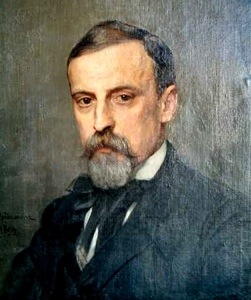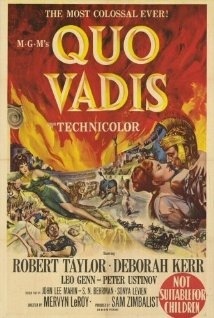Do you know anything of the story of Henry Darger? I’ll confess that before my lunch break on Tuesday I only knew that name from a song from the 2001 Natalie Merchant album, “Motherland.” It’s a haunting tune with beautiful orchestration in parts; I don’t know why I never investigated its origins before…
But that changed when I clicked on a link someone had shared Tuesday on Facebook or Twitter. It was to a post on Flavorwire titled “10 of the Most Cryptic Texts in the World.” They had me. I was stopped dead in my tracks when the second work mentioned was attributed to someone named Henry Darger. As I said above, I knew that name but had never given much thought to who he was, or even if he was indeed a real person. He was indeed.

(above: one of the only three photographs known to exist of Darger)
The Flavorwire article only offers the following “Reclusive artist Henry Darger created an elaborate mythology surrounding a battle between child slaves and vicious overlords that was realized in a 15,145-page saga called The Story of the Vivian Girls, in What is Known as the Realms of the Unreal, of the Glandeco-Angelinnian War Storm, Caused by the Child Slave Rebellion.” That was enough to set me off searching the Internet.
Henry Darger (1892-1973) was a short, unassuming man who worked almost his entire adult life as a custodian in Chicago. It was what he did in his off hours that was remarkable. In addition to the 15k page novel, other posthumous discoveries were thousands of works of art (some containing, frankly, rather disturbing imagery) and vast other writings, including his nearly 5,000 page “History of My Life.” His work has become a frequently cited example of “outsider art” (I’m not sure how exactly this is officially defined, but I prefer to think of it as art without the benefit of any formal training).
(below: the Vivian Girls evading capture?)

Darger spent several of his early years in the Illinois Asylum for Feeble-Minded Children, and the experiences he had therein certainly played a role in his developing the rich mythology – the most prominent theme of which was children in peril – that he chronicled in his magnum opus. I can’t help wondering what this man’s life was like, with its daily drudgery of work, capped by what must have been to him comfortable evenings of returning to the sanctuary his small, one-room apartment and re-entering a rich fantasy realm and working tirelessly on his art. How little we know about what rich, inner lives that perhaps are being led by some of the people in our everyday world!
(below: some of Darger’s manuscripts)

There was an award winning documentary film about Darger that was released in 2004, which may be found on YouTube (though not viewable on mobile devices). Thus far I’ve only seen a few minutes but I will definitely watch the rest over the weekend.
There is an excellent Wikipedia article on Darger as well that includes a few examples of his art. This article included the following which made me chuckle a bit: “Darger himself felt that much of his problem was being able to see through adult lies and becoming a ‘smart-aleck’ as a result, which often led to his being disciplined by teachers and ganged up on by classmates.”
Here are the lyrics to the Natalie Merchant song, and a link to a recorded version:

HENRY DARGER
Who’ll save the poor little girl?
Henry Darger
Henry Darger
Who’ll save the poor little girl?
o, Henry…
Who’ll tell the story of her?
Henry Darger
Henry Darger
Who’ll tell it all to the world?
o, Henry…
Who’ll buy the carbon paper now?
Henry Darger
Henry Darger
Who’ll trace the lines of her mouth?
o, Henry…
Who will conquer foreign worlds
searching for the stolen girls?
Princesses you’ll never fear
the patron saint of girls is here!
Who will draw the calvary in
risk his very own precious skin
to make our Angelinia a free and peaceful land again?
Henry
Who’ll love a poor orphan child?
Henry Darger
Henry Darger
Lost, growing savage and wild?
o, Henry
o, Henry
o, Henry
Were you aware of Henry Darger? I fear I may be the only person with literary interests never to have heard about his story…(?)





























